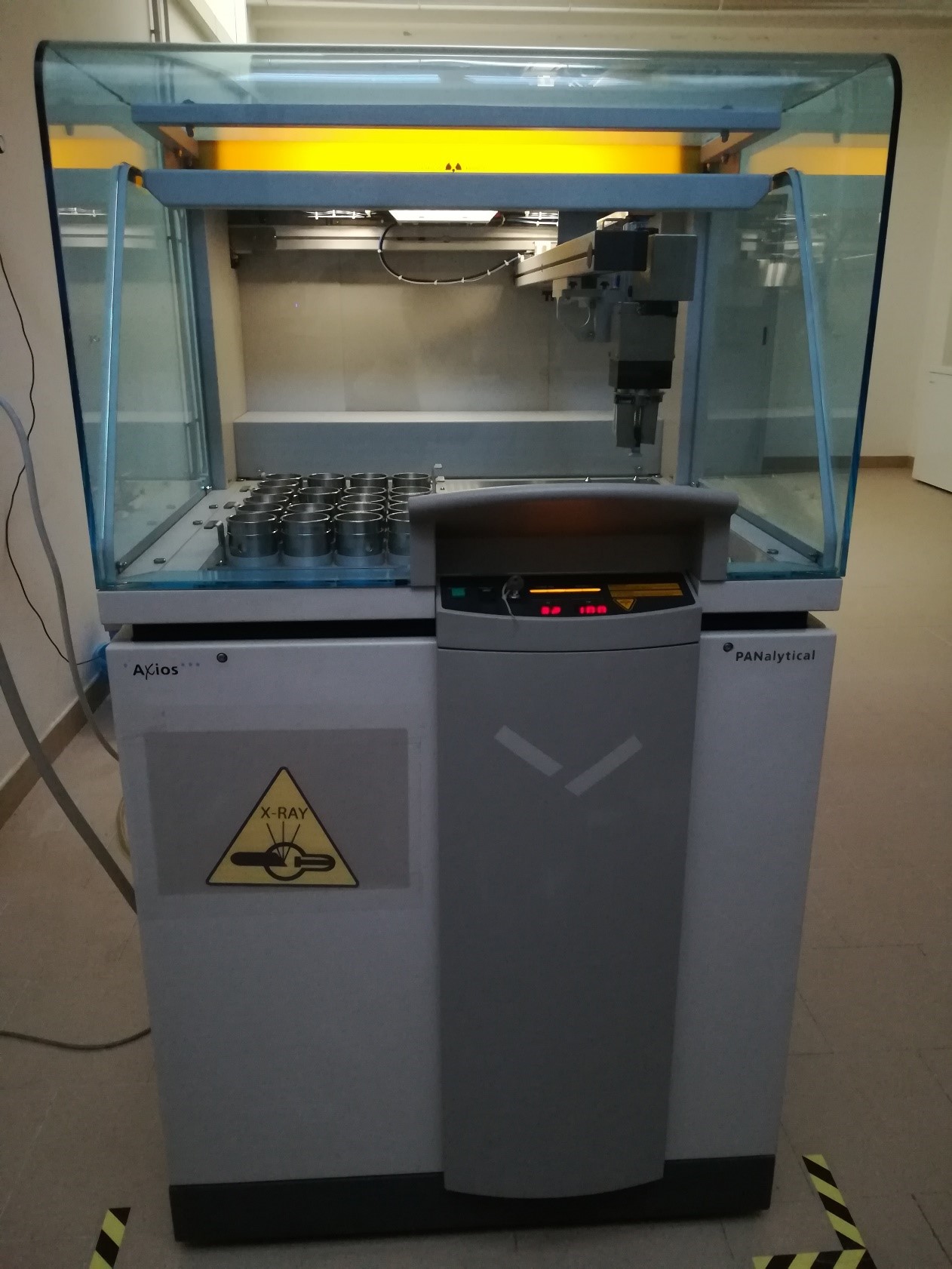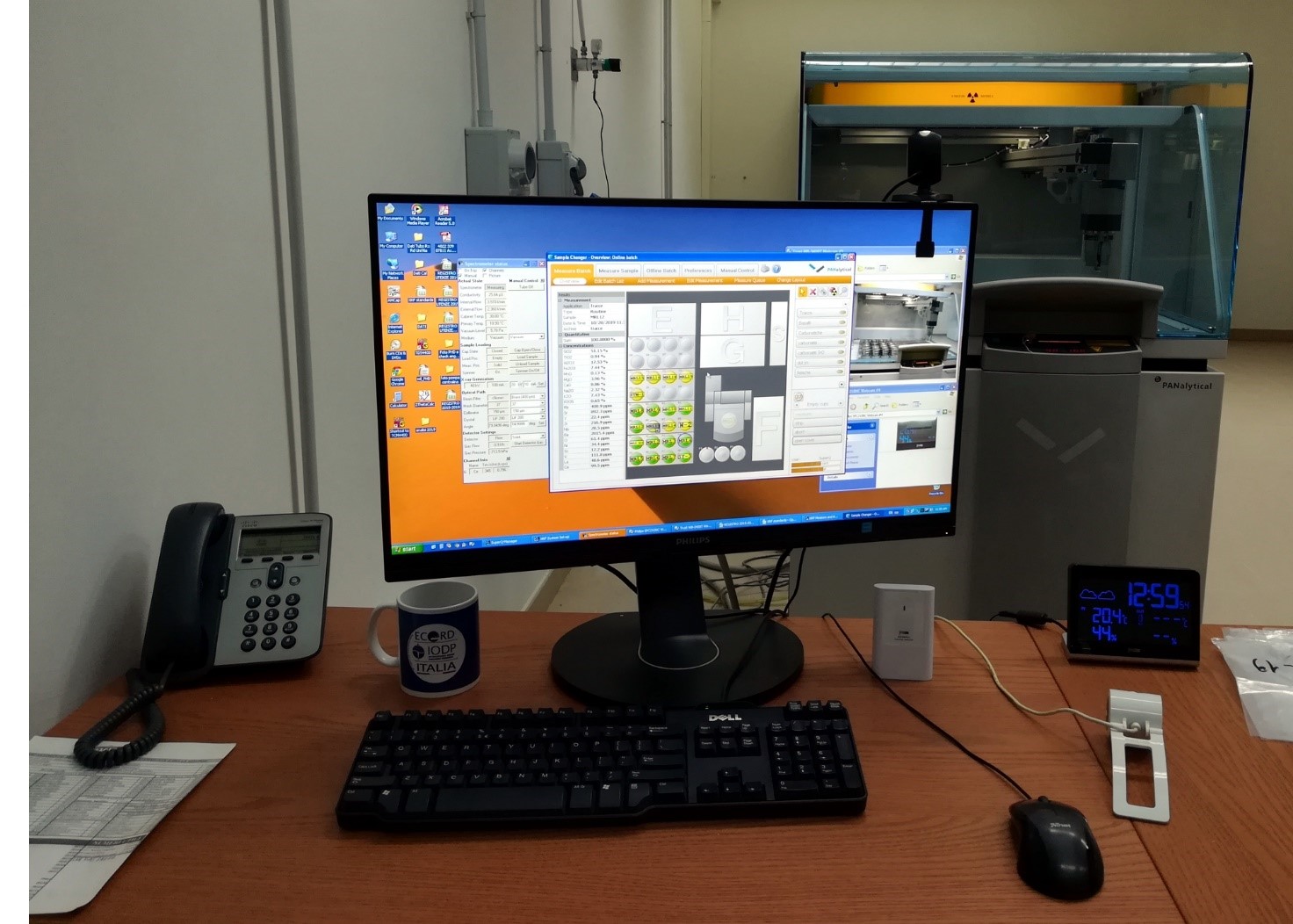Co-Responsible: Prof. Lorenzo Fedele
Telephone: 0812538476
DESCRIPTION OF ACTIVITIES
In the X-ray fluorescence "XRF" laboratory, the chemical analyses of major, minor and trace elements (quantitative and qualitative) are determined on samples of rocks, clays, ceramics, and bricks. The main research activities concern:
- Igneous petrogenesis;
- Archaeometry;
- Research projects conducted within the Department;
- Third party.
LABORATORY EQUIPMENT
Axios Panalytical sequential wavelength dispersion spectrometer (Fig.1), equipped with Rh tube, 6 analyzer crystals (LiF220, LiF200, LiF420, PE002, PX1, TlAP), 3 collimators ((150 μm, 550 μm and 700 μm), 4 filters (Al 200 μm, Al 750 μm, Brass 100 μm, Brass 400 μm) and 2 counters (gas flow counter and scintillator).
Calibration is based on 45 reference standards (K.P. Jochum, J. Enzweiler, 2014, 15.3 - Reference Materials in Geochemical and Environmental Research, Treatise on Geochemistry (Second Edition), Elsevier, Pages 43-70, https://doi.org/10.1016/B978-0-08-095975-7.01403-0). The reference standards are natural geological samples. The software used for the measurements is SuperQ (Fig.2).
Analytical uncertainty is in the order of 1-2% for major elements and 5-10% for trace elements.
Routine analysis of a sample
a. Determination of loss on ignition (L.O.I.).
b. Use of the sample powders to prepare the pressed powder pellets.
c. Sample analysis using the Axios Panalytical spectrometer.
a. Determination of loss on ignition (L.O.I.): a known amount of sample is heated in a furnace at
950°C for about 4 hours, after overnight drying in an oven at 110 °C to drive away adsorbed moisture (H2O−).
b. Sample preparation for XRF analysis: samples for XRF analysis are pressed powder pellets obtained with 4 grams of homogenized powder (to maintain the statistical value of the original sample) and pressed to obtain a tablet.
c. Sample analysis using the Axios Panalytical spectrometer.
Elements analysed Detection limit
SiO2 wt.% > 130 ppm
TiO2 wt.% > 10 ppm
Al2O3 wt.% > 85 ppm
Fe2O3t wt.% > 16 ppm
MnO wt.% > 6 ppm
MgO wt.% > 85 ppm
CaO wt.% > 35 ppm
Na2O wt.% > 85 ppm
K2O wt.% > 40 ppm
P2O5 wt.% > 30 ppm
Rb ppm > 1 ppm
Sr ppm > 1 ppm
Y ppm > 0.7 ppm
Zr ppm > 1.8 ppm
Nb ppm > 0.8 ppm
Ba ppm > 15 ppm
Cr ppm > 2.5 ppm
Ni ppm > 1.8 ppm
Sc ppm > 2.7 ppm
V ppm > 5 ppm
Co ppm > 0.8 ppm
Cu ppm > 0.8 ppm
Zn ppm > 2 ppm
Ga ppm > 1 ppm
La ppm > 15 ppm
Ce ppm > 10 ppm
Yb ppm > 0.5 ppm
Hf ppm > 0.5 ppm
Ta ppm > 0.8 ppm
Pb ppm > 1 ppm
Th ppm > 3.5 ppm
U ppm > 0.8 ppm
F ppm > 25 ppm
Cl ppm > 1 ppm
S ppm > 1 ppm
According to the Radioprotection regulations, access for non-classified personnel (visitors) is permitted provided they are accompanied by laboratory personnel. Access is forbidden to pregnant visitors.

Fig.1 Axios Panalytical sequential wavelength dispersion spectrometer

Fig.2 PC in communication with the spectrometer via SuperQ program

